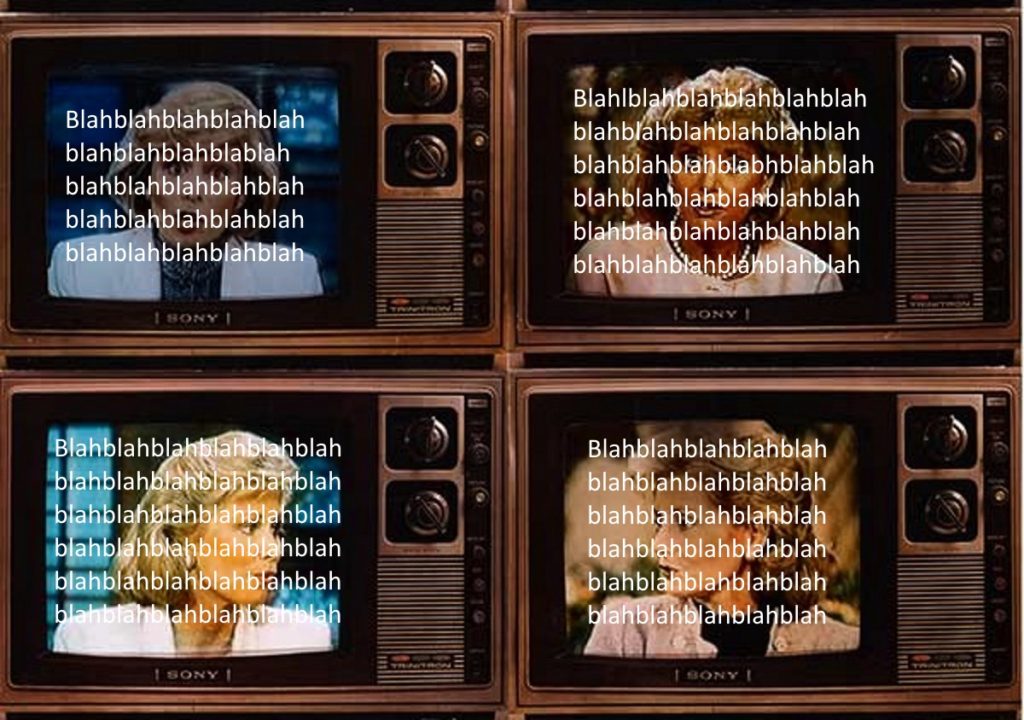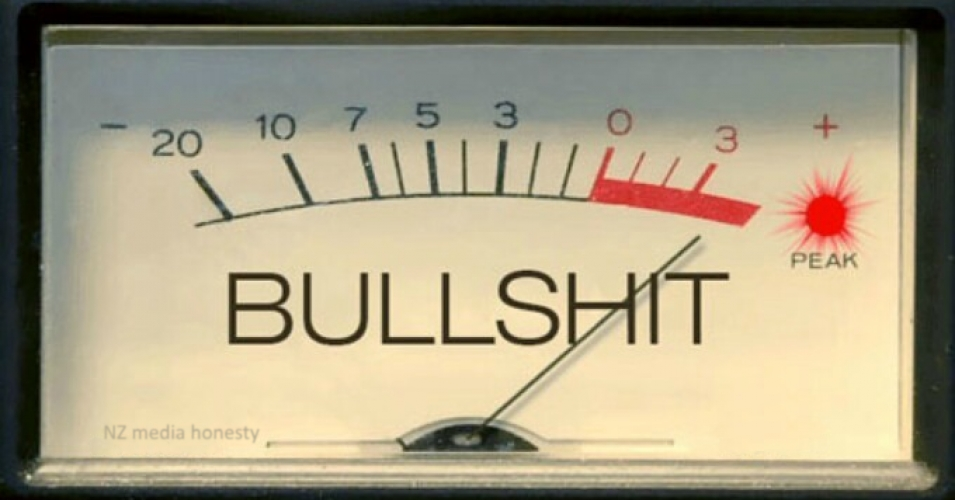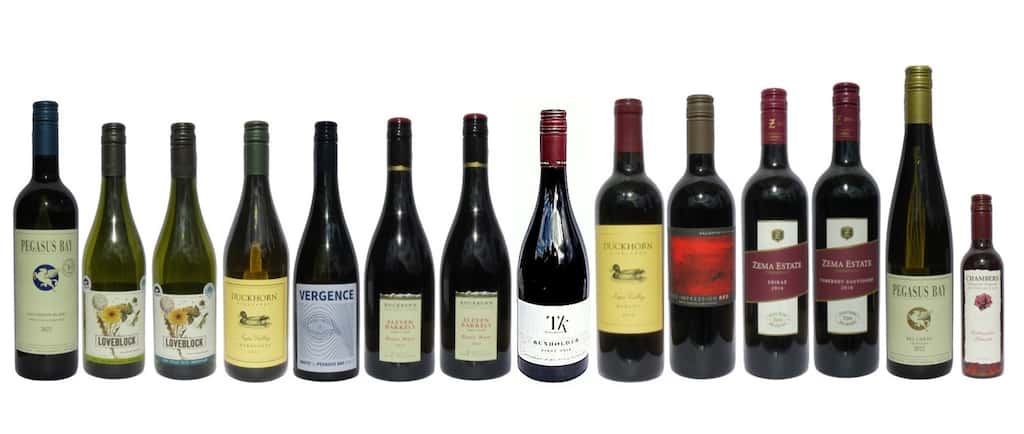It’s scary how few people can tell the difference between opinion and facts, reports PAT PILCHER.
 The wee orange man-child in the Whitehouse seems to be afflicted with Tourette’s syndrome. He has the bizarre habit of shouting “fake news” whenever he reads/sees/hears anything he disagrees with. But there is a growing problem within the media, which seems to be running on a diet of talking heads and opinions, and often at the expense of actual, fact-based news.
The wee orange man-child in the Whitehouse seems to be afflicted with Tourette’s syndrome. He has the bizarre habit of shouting “fake news” whenever he reads/sees/hears anything he disagrees with. But there is a growing problem within the media, which seems to be running on a diet of talking heads and opinions, and often at the expense of actual, fact-based news.
This might sound like a bit of a crusty old git whinge, but there are compelling reasons why we should be concerned.
“The Fourth Estate holds a considerable amount of power, given its ability to both publicise and frame an issue”
The media has long been known as the Fourth Estate. There are good reasons for this. The Fourth Estate holds a considerable amount of power, given its ability to both publicise and frame an issue. This can set the tone and influence the thinking of the other three estates – the clergy, the nobility and the commoners (that’s you and I).

Indeed, a good many journalism academics subscribe to the long-held view that the role of media should be to communicate factual news with the aim being to keep Joe and Joanne public informed so that they can be a contributing part of a functioning democracy. Nowadays, they argue, spin is more prevalent and profitable.
A 2006 study by the Pew Research Centre provides telling insights. Researchers surveyed 100 respondents, asking “if read a list, tell me if you think these organisations mostly report the facts about recent news…”
“Close to half the survey respondents felt they were getting something other than facts”
None of the media types named by Pew fared well. Just over half the respondents reported that local TV (61 percent), daily newspapers (54 percent), network evening TV (53 percent) and major national newspapers (45 percent) were seen to be communicating facts. That might not sound too bad until you consider that this also means that close to half the survey respondents felt they were getting something other than facts from their media consumption.

Admittedly, the study had a small sample, and it was US based, but it echoed similar results from a survey carried out last year as part of the Media Insight project. In the study, half of the respondents were unfamiliar with the term “op-ed” (opinion editorial). Just under a third (27 percent) said they were unfamiliar with the difference between editorial (opinion) content and news stories (factual reporting), or a reporter (who should convey facts) and columnist (who more-often-than-not peddle opinion). Equally alarming, a further 29 per cent of respondents didn’t know the difference between an analyst (who usually talks in verifiable facts) and a commentator (whose primary role is the communication of opinions).
“Just under a third said they were unfamiliar with the difference between editorial content and news stories”
In New Zealand, where the media pool is more of a dirty shrinking Australian owned puddle, it is a good bet that a similar lack of awareness exists. Further compounding things, New Zealand media appears to have a hawkish penchant for peddling opinion, and the more polarising, the better. Pundits like Duncan Garner, Mike Hosking and Mark Richardson are all earning a healthy living from being given their own pedestal from which to dish out their views to an unsuspecting audience.
Any seasoned newsroom editor should know the harm that opinion-led news can do, which begs that the question be asked: Why is this allowed to happen? Sadly, the answer often comes down to an advertising-driven media game.

The best illustration of this is internet advertising. Readers see an opinion piece click-bait headline and do one of two things. They either think something along the lines of, “Hell yes! This is exactly what I think too!” and click the link to see what’s being said, or others go, “Whaaa? This is such a load of bullshit!” as they grimace and click the link. With link click-through literally counting as money, opinion pieces are a tidy little earner, and most crucially, a sure-fire bet for media companies, who like any other business, are in it for the money, not the love of the game.
“Unfortunately, facts seem to get trampled in the headlong rush to push the opinions of a prominent pundit”
Don’t get me wrong, not all opinion is evil. Most readers want news with some colour. Stories that consist solely of sterile facts usually make for a yawn-inducing read. Unfortunately, facts seem to get trampled in the headlong rush to push the opinions of a prominent pundit.
Further clouding the issue are blogs. These are typically low-cost online operations lacking the resources and editorial wherewithal of major media organisations. They also often tend to get used as a vehicle to broadcast the views of their creators. Blogs, according to the Pew survey, had the second least amount of facts (colour me surprised, but the lowest belonged to talkback radio). Most critically, blogs had the highest number of respondents saying they were unable to distinguish between fact and opinion (45 per cent).
“Blogs had the highest number of respondents saying they were unable to distinguish between fact and opinion”
That said, blogs tend to have a far lower readership and audience reach than mainstream media. The bulk of their readership comes from younger generations who have been found to be more capable than their older peers in sorting fact from opinion online (Pew said that 52 per cent of adults under 30 said it’s very or at least somewhat easy to make the distinction on social media, compared to a mere 34 per cent of respondents aged 60 or older).

Speaking of social media, it has undergone explosive growth and enjoys a wide following. Opinions are often misrepresented as fact by both posters and consumers which, when combined with the huge reach of the medium, can make for a particularly toxic mix.
This is particularly evident in the recent rise of the alt-right in the US, which has become a visible presence (as witnessed by last-year’s protests and resulting violence in Charlottesville). Online publications such as Richard B. Spencer’s Alternative Right webzine, through to the more widely known Breitbart News, helped lend extreme right-wing nationalist views an air of credibility. Facts where thin on the ground, and opinions often framed as fact.
“Opinions are often misrepresented as fact by both posters and consumers which can make for a particularly toxic mix”
So, should we be alarmed at the rise of opinion-led reporting in our media? Oxford University academics think so. They say that media preferences drive self-selection of content and that this can become a downward spiral in which the framing of issues can have an impact in broader society:
“The attitudinal or behavioural outcomes of media use can be expected to influence the selection of and attention to media content. This process can be conceptualised in terms of mutually reinforcing spirals akin to positive feedback loops in general systems theory. This reinforcing spirals perspective highlights the need for longitudinal modelling of mutually influencing media selection and effects processes; study of the impact of such processes in youth and adolescent identity development; and analysis of social and psychological factors that control, dampen, or eventually extinguish the influence of such spirals. This perspective may also, more speculatively, be extended to address the maintenance of social identity for political, religious and lifestyle groups. The relevance of a reinforcing spirals model to theories including spiral of silence, agenda-setting, framing, cultivation, selective attention, and uses and gratifications is also discussed.”

There is little doubt that the rise of alt-right groups and the associated latent fascism throughout the US and Europe was aided by opinion-led perspectives and punditry. One only need look at the recent immigrant crisis drama that saw Donald Trump ordering extra troops to the US-Mexico border before a so-called caravan of migrants arrived. The US media and pundits had a field day, and the caravan soon took on epic proportions in the minds of those less willing to adopt a more sceptical view. Panic led to the deployment on the US/Mexican border growing to around 7000 troops (a whopping 5000 more than the US sent to Syria to fight ISIS).
So, what can be done to help the public discern fact from fiction and opinion? The American Press Institute says that the following changes are needed to how the media conveys information:
“The rise of alt-right groups and the associated latent fascism throughout the US and Europe was aided by opinion-led perspectives”
“Provide explanation and analysis in news coverage, but know some readers perceive a creep toward punditry. Readers want background and context, but many people think reporting veers more toward commentary than it should. It is important to mind the difference between explaining the facts and injecting opinions.
“Make clearer distinctions between the content types you publish. In the digital environment, pages and experiences should be designed so people can quickly tell if what they’re reading is news, opinion or analysis. This should be clear on the page and on the social media channels in which so many people encounter news.

“Explain the purpose of your opinion content and editorials. Many readers aren’t familiar with these terms, and news organisations’ reasons for publishing opinion content might not be clear to readers. Explain why you publish opinions or editorials — and consider whether your reasons for doing so should evolve — so that readers understand your goals.
“Identify possible new opportunities for your opinion sections. In thinking about your reasons for publishing opinion content, you may find other ways you can serve those goals. Beyond publishing columnists’ viewpoints, how might your opinion sections lift up diverse community voices? Moreover, how might your news organisation facilitate dialogue about differences in your community?”

As good as these fundamental principles sound, the likelihood of them being embraced locally is close to zero. A case in point was the major publication (which shall remain nameless) that was recently prosecuted for misleading readers when it displayed adverts formatted as editorial content online. With such shady ethics from a supposedly reputable publication, there is little hope that big media will adopt a more enlightened approach to peddling opinion over fact.











